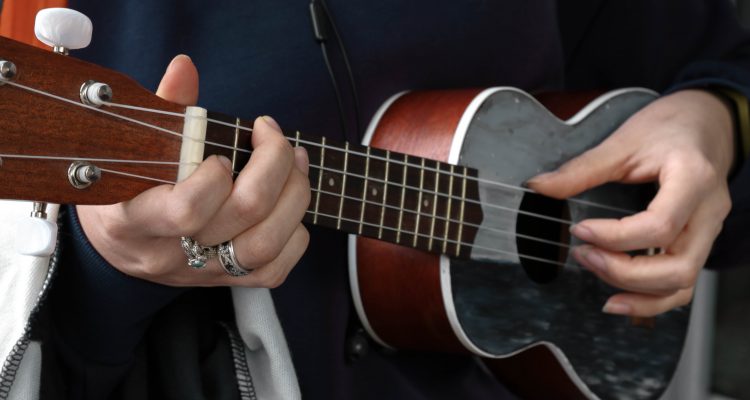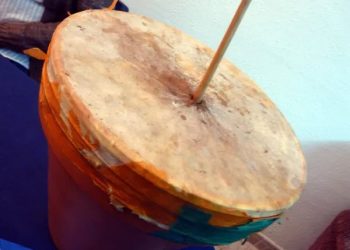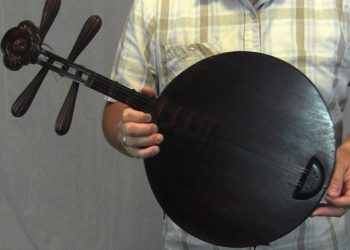Music has been an integral part of human culture for centuries, and the diversity of musical instruments used throughout history is a testament to its universal appeal. From stringed instruments to percussion, wind instruments to electronic ones, the variety of musical instruments is seemingly endless. However, when it comes to naming musical instruments that start with the letter U, the list is relatively short. Nevertheless, the ones that do exist are unique and diverse, each with their distinct sounds and playing techniques.
In this article, we’ll be exploring the top 7 musical instruments that start with the letter U. We’ll dive into the history, playing techniques, and notable musicians who have used these instruments to create beautiful music. From the exotic-sounding udu to the well-known ukulele, we’ll explore the cultural and musical significance of each of these instruments.
Whether you’re a musician, a music enthusiast, or someone simply looking to expand your knowledge of musical instruments, this article will be an informative and exciting journey through some of the lesser-known, yet fascinating instruments in the world of music. So, let’s dive in and explore the top 7 musical instruments that start with the letter U.
1. Ubo
Continuing the exploration of traditional instruments, UBO – Unaccompanied Bowed Oud – is another option that’s sure to captivate. This instrument originates from Arabic music and has been used around the world for centuries. The oud features a large soundboard with strings attached, making it one of the most recognizable Middle Eastern instruments.
Unlike its bowed counterpart, UBAH, playing UBO requires finger picking instead of bowing. Players use their right hand fingers to pluck the strings while using their left-hand thumb or index finger to press down on different frets along the neck of the oud. This technique creates an incredibly rich and complex soundscape full of melodic ornamentations and dynamic changes in tone color.
UBO players are often admired for their technical mastery as well as their improvisational skill; they must be able to instinctively switch between various rhythms and scales throughout performances without losing momentum or clarity. Additionally, many performers develop unique techniques such as tapping or slapping with both hands to create even more intricate textures within their playing style.
What truly sets apart UBO performance is how much freedom it grants musicians when creating original compositions. By combining elements from classical music with contemporary influences like jazz and electronic sounds, musicians can easily craft something fresh yet familiar at the same time – perfect for any occasion!
2. Udu
A further development of the UD/UOD, the UDU is a percussion instrument that merges traditional Arabic design with modern technology. Its structure consists of two components: an upper part comprised of three drums and a lower portion consisting of four cymbals. This unique combination allows for distinct tonal qualities depending on how each component is struck or manipulated. The versatility of this instrument has made it a favorite among many contemporary musicians who are looking to explore new sounds.
The striking surface of each drum can be used to achieve different tones, while the cymbals offer even more sonic possibilities when tapped or vibrated with one’s hands. Additionally, some players have adopted techniques such as muting certain areas in order to create specific effects like staccato-like patterns and crescendos. With UDU, musicians can easily transition from soft melodies to intense rhythms – all within one performance!
What makes UDU so attractive is its ability to blend both acoustic and electronic elements into a single entity; this hybrid approach gives performers greater control over their soundscape and enables them to craft truly original compositions. Furthermore, since it is relatively lightweight compared to other instruments in its class, it’s possible for artists to take their music anywhere they go without worrying about bulky equipment taking up precious space.
UDU offers plenty of potential for musical expression and exploration; its wide range of sounds make it perfect for everything from intimate solo performances to vibrant jam sessions with friends – no matter what kind of music you’re playing!
3. Uilleann Pipes
The Uilleann pipes, also known as the Irish bagpipes, are an ancient form of traditional music that have been used in Ireland for centuries. The instrument is a complex one – it consists of two main components:a bellows and drones. A player must pump the bellows with their arm while using their hands to manipulate the reeds on the drones to produce sound. Unlike most other instruments, the Uilleann pipes require extensive practice and skill to play correctly; it can take years before players become proficient enough to perform well-crafted pieces.
The unique combination of sweet-sounding melody and driving rhythms makes this instrument stand out among its peers. Its haunting tones evoke feelings of nostalgia, longing, joy or sorrow depending on what tune is being played. This makes it perfect for any setting – from intimate gatherings around campfires to large festivals where thousands may be listening!
Due to its complicated nature, there aren’t many musicians who specialize in playing this instrument so finding someone who can properly teach you how to use it can be difficult. However, if you persevere through lessons and practice sessions then eventually you will begin mastering this challenging yet rewarding musical tool! With patience and dedication anyone can learn how to create beautiful sounds with these amazing pipes.
Uilleann pipes offer a distinct style of music which has captivated audiences throughout history – they remain popular today due to their versatility and timelessness. Whether you’re looking for something new to add into your repertoire or just want some refreshing tunes during your next jam session – look no further than these enchanting wind instruments!
4. Ukulele
Having explored the Uilleann pipes, it’s time to move onto another instrument that has been gaining popularity in recent years: the ukulele. This four-stringed Hawaiian guitar is an easy and fun way to get into playing music. Its small size makes it great for travelling musicians or those just starting out on their musical journey. With its bright and cheerful sound, the ukulele adds a unique twist to any track – whether you’re strumming along with traditional tunes or creating your own original compositions!
The best thing about learning how to play the ukulele is that there are no rules when it comes to technique – anything goes! The chords can be simple or complex, fast or slow; you can even mix up different styles if you want. So don’t worry if you’re not sure where to start – just pick up your instrument and give it a go! It won’t take long before you feel comfortable enough to begin experimenting with various rhythms and melodies.
When accompanied by other instruments like acoustic guitars, violins or drums, the ukulele can provide depth and character to any song. Or if you prefer performing solo pieces then try accompanying yourself with finger-picking patterns instead of strumming. In either case, this versatile tool will help bring your creativity alive as soon as you start playing around with ideas of what sounds good together!
Overall, the ukulele provides endless possibilities for musicians looking for something new and exciting in their repertoire. Whether used alone or combined with other instruments, this lively little stringed instrument offers plenty of ways to express oneself musically. A few practice sessions may be needed at first but once mastered all sorts of beautiful music can be created from these humble beginnings!
5. Uli ‘Uli
Another Hawaiian instrument worth exploring is the uli ‘uli. This small and lively gourd rattler adds a distinctive texture to any performance – whether it’s accompanying traditional tunes or adding flavor to modern compositions. Its distinct sound is created by shaking two pieces of dried coconut shell, which results in an intriguing mix of rhythm and melody. It can be used either as a solo instrument or alongside other instruments like acoustic guitars, violins or drums.
The great thing about learning how to play the uli ‘uli is that you don’t need prior experience with any musical instruments. As long as you have some basic coordination skills and a sense of timing then you’ll soon pick up the basics. You may even find yourself enjoying creating unique rhythms and beats! With practice, your playing will become more intricate and dynamic; allowing for expression on a whole new level.
When strumming along with others, the uli ‘uli helps create an energizing atmosphere that encourages everyone to join in. Alternatively, when played alone its vibrant tone can help transport listeners into another world entirely – one full of enchantment and captivating stories! No matter what setting it’s used in though, this wonderful little percussion tool always brings life to each piece it accompanies.
Overall, the uli ‘uli offers endless possibilities for musicians looking for something fresh and exciting in their repertoire. Whether jamming with friends or performing solo pieces at home, there’s no doubt that this fun-filled instrument has plenty to offer musically! So why not give it a go? Who knows where your creativity could take you next?
6. Umrhubhe
For those looking to explore another unique sound, the Umrhubhe might be the perfect instrument. This traditional South African stringed instrument is made from a combination of tree trunks and animal skins and has four strings which are plucked using fingers or a plectrum. The resulting sound is truly mesmerizing – each note ringing out with its own gentle yet distinct tone.
In addition to its captivating melody, playing the Umrhubhe can have therapeutic benefits too. Its calming nature allows us to escape into our own musical world, helping us process emotions through song like never before. What’s more, this instrument doesn’t require any special tuning or maintenance tools – just your own two hands!
Plus, it’s accessible for musicians of all levels; whether you’re a beginner or an experienced performer. It’s no wonder why so many people choose the Umrhubhe as their companion – because every time they pick up their instrument, there’s potential for something incredible to emerge!
So if you’re searching for a peaceful way to connect with yourself musically, look no further than this beautiful South African stringed instrument. With patience and practice, anyone can learn how to play this enchanting piece – allowing them to experience all that music has to offer in a completely new way.
7. ÜtŐGardon
For those in search of a unique and beloved Hungarian instrument, the Ütőgardon may be just what you’re looking for. This stringed instrument is constructed from dried wood or metal strings stretched across a wooden frame that’s often decorated with colorful beads or intricate patterns. When played, it produces an unmistakable sound – one that instantly conjures up memories of traditional folk music.
What makes this instrument so special is its versatility; depending on how it’s strung, players can achieve different tones and timbres to suit their preferences. Even beginners will find themselves quickly immersed as they explore chords and melodies while developing their own style of playing.
The portability of the Ütőgardon also adds to its appeal; no matter where your travels take you, having this instrument at your side allows you to bring a piece of home along wherever you go. And what better way to connect with locals than by picking up your Ütőgardon and performing some classic tunes?
From connecting us with our roots to providing endless opportunities for exploration, there are countless reasons why the Ütőgardon has become such a beloved musical companion worldwide. Whether it’s being used for lively performances or intimate gatherings, this magical instrument never fails to create lasting moments full joy and connection – truly embodying the spirit of music!










